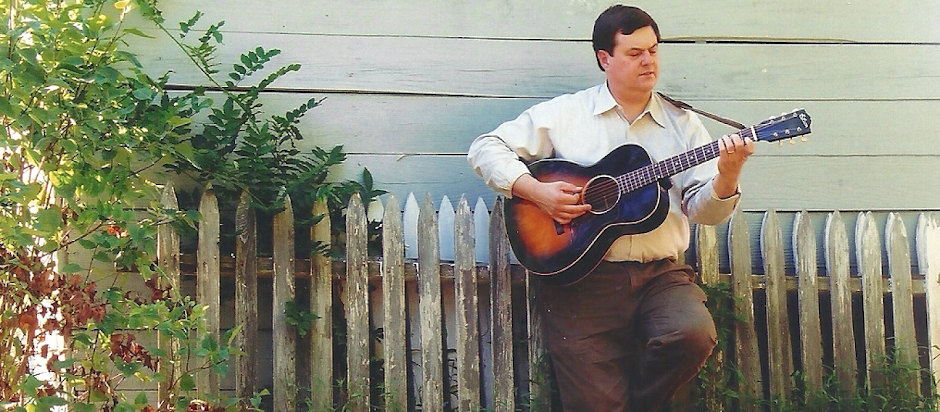Big box with issues at a big-box store
Posted July 2012 — revised Nov 2014
__________________________________
© 2014 by Kenneth Lelen — All Rights Reserved
Please see FEEDBACK at end of article
__________________________________
© 2014 by Kenneth Lelen — All Rights Reserved
Please see FEEDBACK at end of article
 |
| One of seven comps for 1951 Gibson J-45 |
This instrument is, however, one reason I'm dubious of guitar dealers, large or small, who say a guitar was "gone over" by their repair person, offered in "original condition," or "ready to play 70 more years."
Among my favorite pieces of dealer dribble is this misleading phrase: "All it needs is your fingers on the strings."
You hear what I hear?
My adventure with this guitar was short. I examined it few times at The Guitar Center (TGC) in Langhorne PA in January 2006 and made this assessment:
It was offered as a 1949 Gibson J-45 (FON 6572 25) in VG+ condition. On the plus side, its interior braces were solid, the sunburst spruce top had only minor wear, the mahogany back and sides had no blemishes, and there was no pickguard crack.
On the other hand, it had what I believed was a shaved or possibly sanded rosewood bridge, thin bone saddle, plastic strap pin in the treble-side heel (easily removed and patched) and moderate-plus fret wear.
Worse of all, the bluegrass set-up seemed high and the frets buzzed. At my insistence, TGC's on-site repair person inspected it and provided truss rod relief. This work, however, was not enough to eliminate the fret buzzing, which was objectionable to me.
In my opinion the guitar needed a neck reset, fret dressing or new frets, and perhaps a new bridge with taller saddle. In all, I estimated this big box at a big-box retailer needed $500 to $700 in repairs to optimize its playability.
Finding price comps
TGC's price on the instrument was $4,500, which I considered a premium for a guitar that buzzed. In short order, I found seven sales comps on J-45 guitars made between 1949 and 1951 at other guitar dealers. At the time I considered buying this guitar — in early 2006 — retail prices ranged from $2,200 to $4,500 and averaged $3,675.
In addition, I was dubious of the guitar's vintage. While I wouldn't call the 1949 date by TGC a mistake, my research showed the combination of modern-style headstock, three-ply binding on top and back and the 6572 FON meant the guitar was likely made in 1951, not 1949.
In 1951 Gibson produced 1,520 of these J-45 guitars and sold them at retail for $80. In 1952 the firm began using letters in its FON code (Z = 1952, Y = 1953, etc.) and changed some design elements, which has made vintage dating somewhat easier.
I offered TGC $3,800 to reflect the guitar's age and condition, the work I felt it needed to optimize playability, and to match comparable J-45s in the market. After checking with its vintage experts in Hollywood CA, TGC in Langhorne responded as follows:
"It's a 1949 vintage Gibson J-45 which we'll reduce to $4,300 in 'as is' condition now. Otherwise, it's priced at $4,500 'firm' once TGC in Hollywood performs any repairs it deems necessary. In addition, afterwards there is no price negotiation and no guarantee the guitar would be returned to Langhorne."
Whew!
Biting proverbial bullet
I've conducted more successful price negotiations with TGC at its stores in Los Angeles CA, Towson MD, Columbus OH and Danvers MA. Still, on 9 February 2006, I accepted their "as is" price and paid $4,558 including PA sales tax.
I took it home, cleaned it, polished it, changed the strings and played it. I also installed my I.D. labels inside the body. A few people have found these tags inside vintage acoustic guitars I previously owned and inquired about my stewardship.
Nevertheless, even with TGC's set-up work, it only played OK — a lackluster acceptance on my part. What's more, once I'd played it for several days and learned what it could and could not do, I just could not justify spending another $500 to $700 for repairs and set-up on this guitar. Besides, I might find a similar vintage Gibson J-45 without issues at another dealer at the same or lower price.
So, a week later I returned it and got all my money back. Later, they re-listed the guitar — again as a 1949 J-45 and again at $4,500.
_________________________________________________
© 2014 by Kenneth Lelen — All Rights Reserved
FEEDBACK
Pretty interesting stuff. Specific dating by serial # of instruments other than Martin guitars [their system is pretty iron-clad] is often iffy, particularly with Gibson instruments. Serial # dating isn't always perfect, nor is dating by appointments, like bridges, pickguards or tuners. Almost anyone with extensive experience in these matters can come up with exceptions to the "rules." — Leo Coulson, Intermountain Guitar & Banjo, Salt Lake City, UT
_________________________
I like "this diversity of opinion confirms that it's a Gibson." No Gibson serial number list should be taken as absolute. In the case of the J-45, I think the tapered headstock indicates it was made before mid-1950. We don't know an exact date or even a month in 1950 when the headstock [design] changed. Most, but not necessarily all, 6000-series FONs are found in 1952, but the guitar should not have a tapered headstock that late. So, the most logical date would be early in 1951. And the teardrop pickguard lasts until 1955. — Walter Carter, Carter Vintage Guitars, Nashville, TN
_________________________
Thanks for the heads-up on this one. I get a kick out of finding your labels inside the instruments. — Mark Stutman, Folkway Music, Waterloo ON
_________________________
Thanks for the article. Anyone who takes The Guitar Center for their word about anything needs to be taught a lesson! All the best. — Steve Swan, Steve Swan Guitars, Burlingame, CA
_________________________

